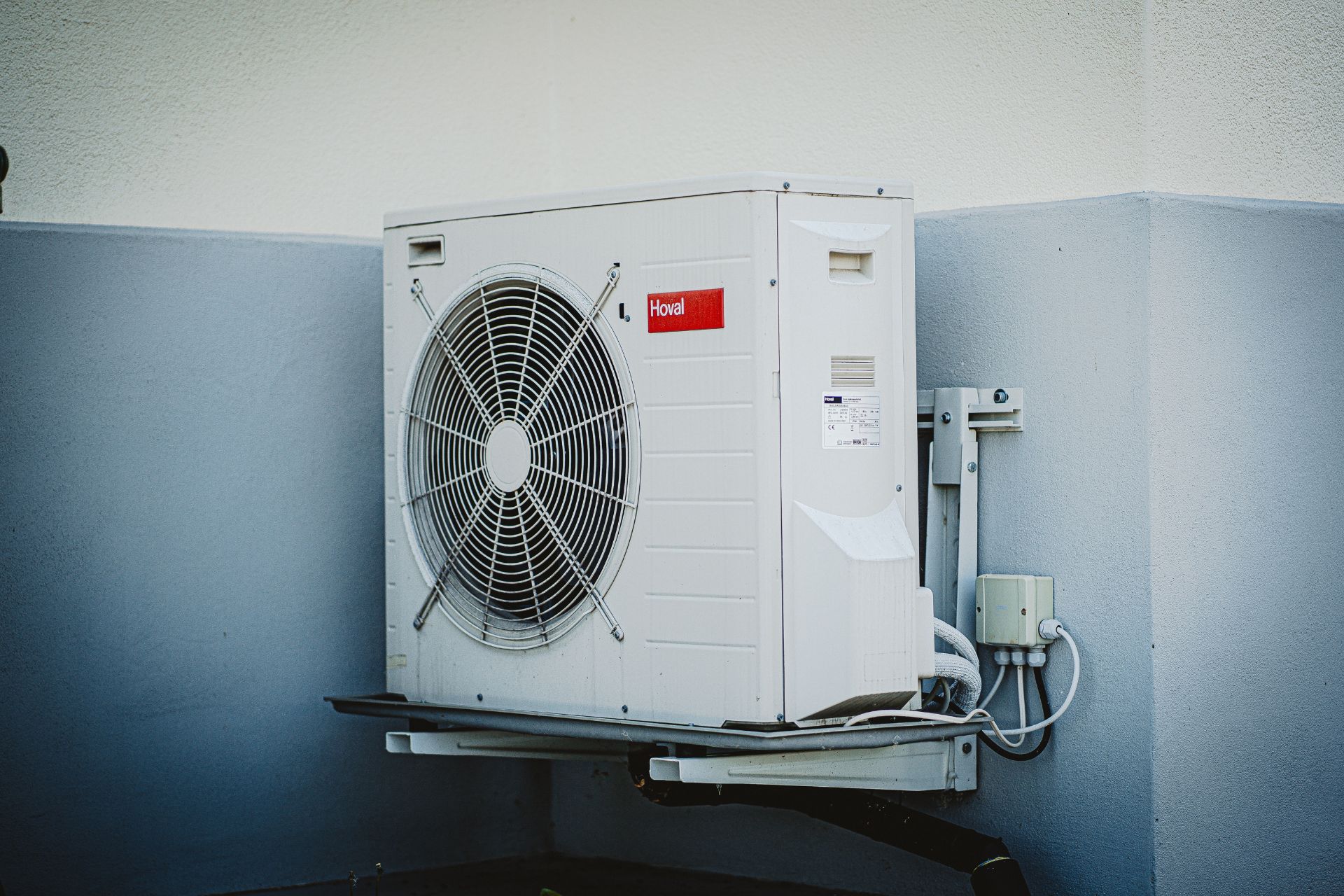
How Does a Heat Pump Work to Provide Eco-Friendly Heating and Cooling
We are reader-supported. When you buy through links on our site, we may earn affiliate commission.
As the world shifts toward sustainable solutions, heat pumps are one piece of equipment that provides eco-friendly home climate control. More homeowners are integrating this device into their homes and practicing sustainable living when possible. Although heat pumps make small contributions to global sustainability, they significantly reduce carbon footprint compared to other heating systems. So, how does a heat pump work?
What Is a Heat Pump?
A heat pump is a device that moves heat from one place to another. A heat pump doesn’t generate heat — instead, it transports it. However, it can provide heat to your home. During colder months, it collects heat from the outside air or ground and delivers it inside your home, giving warmth.
A heat pump also cools your home in the warmer months by extracting heat from the inside and releasing it outdoors. Most people are familiar with traditional heating systems like furnaces. While these household systems produce heat, they burn fossil fuels, leaving a large carbon footprint on the earth’s atmosphere. In fact, approximately 25% of the energy created around the world is utilized to cool and heat homes and commercial buildings.
In contrast, a heat pump is a more eco-friendly solution. It uses electricity to transfer heat using a cooling agent known as refrigeration. Heat pumps are an all-in-one solution for homeowners looking to heat and cool their homes without burning fossil fuels.
The Basics of How a Heat Pump Works
For a heat pump to transfer heat, it uses a liquid refrigerant that absorbs and releases warmth. The refrigerant circulates between two sets of coils, one inside the home and the other outside.
In the heating mode, the outdoor coil acts as an evaporator. It absorbs heat from the air or ground. Then, the refrigerant carries the absorbed heat back to the indoor coil. This part acts as a condenser, releasing the heat into your living space.
On the other hand, the roles reverse for cooling. The indoor coil absorbs heat from your home’s air, and the refrigerant transports it outside to release it.
Throughout this process, a compressor modulates the refrigerant’s pressure to facilitate the absorption and release of heat. This enables the heat pump to maintain comfortable temperatures inside your home efficiently.
How Are Heat Pumps Eco-Friendly?
Heat pumps are the top energy-efficient solution to heating your home. They’re the most sustainable way to warm your house, but how?
Consumes Less Energy
Heat pumps are a great way to boost your home’s energy efficiency. Because they only move your heat from one place to another, the process requires significantly less energy. At the same time, they still provide the same level of comfort that a furnace or boiler uses at a fraction of the power. With the ability to reduce the amount of energy, homeowners save money on their monthly electric bills.
Uses Only One Device
Another advantage of heat pumps is their all-in-one design. Traditional setups often require separate devices for heating and cooling, each with its own energy demands and environmental footprint. On the other hand, a heat pump combines these functions into a singular unit. While this simplifies installation and maintenance, it also reduces manufacturing costs and disposal impacts. Using only one device for heating and cooling allows owners to contribute to a more sustainable future.
Uses Updated Heating Methods
Today, heat pumps prioritize environmental responsibility with advanced heating methods. Conventional heating systems — especially older models — often rely on the combustion of fossil fuels, releasing greenhouse gasses into the air. However, heat pumps use thermodynamic principles to transfer heat without combustion.
Additionally, the latest heat pump models have enhanced controls, sensors and variable-speed compressors. These innovations optimize performance, ensuring the device operates at peak efficiency.
Lasts a Long Time
One attribute that homeowners often overlook with heating systems is their longevity. A well-maintained heat pump can serve a household efficiently for over a decade. This long life span means fewer replacement costs and reduced waste. Fewer manufacturing cycles also equate to reduced resource consumption and lower environmental impact. On top of this, a longer operational life means less strain on landfills and reduced demands for raw materials.
The Different Types of Heat Pumps
Heat pumps come in various designs, each made to suit specific needs and environmental conditions. Finding out the answer to “how does a heat pump work” requires you to know the type of heat pump. Here are the primary types:
- Air-to-air heat pumps: This is the most common type where these units transfer heat between indoor and outdoor air. They’re suitable for different climates and are generally easier to install. However, their efficiency can decrease in extremely cold temperatures.
- Ground source or geothermal heat pumps: These utilize the consistent temperature of 9,000 degrees Fahrenheit of the earth as a source for heat. While their installation cost is higher, they offer greater efficiency and longer lifespans. They’re especially effective in areas with temperature fluctuations, as the ground temperature remains stable.
- Water source heat pumps: These systems tap into a water source to exchange heat. The consistent water temperature aids in maintaining high efficiency throughout the year.
- Ductless mini-split heat pumps: Ideal for homes without existing ductwork or room-specific heating and cooling. These units allow for zoned climate control, where you can set rooms at varying temperatures.
- Absorption heat pumps: Also known as gas-fired heat pumps, they work similarly to air-to-air variants but use natural gas, propane or solar power.
Installation and Usage Tips for Heat Pumps
Optimizing the performance and longevity of your heat pump begins with proper installation and smart usage. Here are some key tips to consider:
1. Use Professional Installation
Unless you’re a professional, hiring a certified and experienced technician to install your heat pump is always a good idea. Proper sizing and placement are crucial to ensure peak performance and efficiency. An undersized or oversized unit may lead to increased energy consumption and reduced life span.
2. Regular Maintenance
Like any piece of machinery, heat pumps benefit from periodic check-ups. Ensure your filters are cleaned or replaced regularly, coils are free from dust and debris, and the system is checked for refrigerant leaks.
3. Optimal Thermostat Settings
Resist frequent temperature adjustments. Consider using programmable thermostats that automatically set temperatures based on your routine. That way, you optimize comfort while saving energy.
4. Protect the Outdoor Unit
Ensure the outdoor component of the heat pump is shielded from direct sunlight. It should also have good airflow and be clear of debris or snow. However, avoid enclosing it tightly, as it requires ventilation.
5. Use in Conjunction With Insulation
For best results, ensure your home is well-insulated. Drafts or heat leaks strain your heat pump, making work harder and reducing efficiency.
How Does a Heat Pump Work?
Now that you know how heat pumps work, switching to this heating and cooling system may be worth it. Continue to push toward greener practices and reap the benefits associated with it. In the long run, you save money and help the planet by choosing and using wisely.
Share on
Like what you read? Join other Environment.co readers!
Get the latest updates on our planet by subscribing to the Environment.co newsletter!
About the author
Steve Russell
Steve is the Managing Editor of Environment.co and regularly contributes articles related to wildlife, biodiversity, and recycling. His passions include wildlife photography and bird watching.





